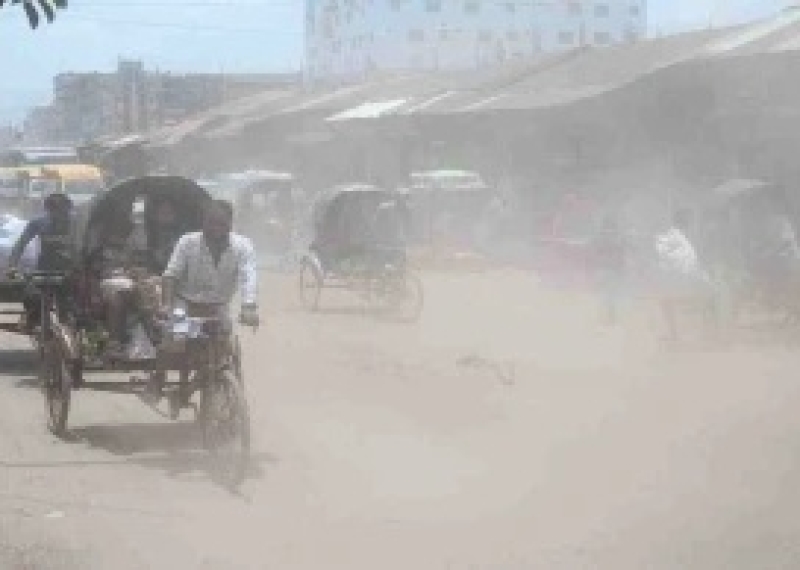- UNRWA Situation Report on Crisis in Gaza & Occupied West Bank |
- Intimidation or bloodshed cannot halt Bangladesh’s march to democracy |
- Khaleda Zia integral to an important chapter in BD history: Yunus |
- Enthusiasm marks Victory Day celebrations across Bangladesh |
- Dhaka-Delhi ties deep; to be shaped by trust, dignity, mutual respect |
Dhaka’s air quality 6th worst in world Monday morning

Air pollution in Dhaka City.
Dhaka, May 20 -Dhaka has ranked sixth on the list of cities worldwide with the worst air quality with an AQI score of 165 at 9 am this morning (May 20, 2024).
Dhaka’s air this morning was classified as 'unhealthy', according to the air quality index.
When the AQI value for particle pollution is between 50 and 100, air quality is considered ‘moderate’, between 101 and 150, air quality is considered ‘unhealthy for sensitive groups’, between 150 and 200 is ‘unhealthy’, between 201 and 300 is said to be 'very unhealthy', while a reading of 301+ is considered 'hazardous', posing serious health risks to residents.
India’s Delhi, Pakistan’s Lahore and Indonesia’s Jakarta occupied the first, second and third spots on the list, with AQI scores of 381, 188 and 175, respectively.
The AQI, an index for reporting daily air quality, informs people how clean or polluted the air of a certain city is and what associated health effects might be a concern for them.
The AQI in Bangladesh is based on five pollutants: particulate matter (PM10 and PM2.5), NO2, CO, SO2, and ozone.
Dhaka has long been grappling with air pollution issues. Its air quality usually turns unhealthy in winter and improves during the monsoon.
As per World Health Organization (WHO), air pollution kills an estimated seven million people worldwide every year, mainly due to increased mortality from stroke, heart disease, chronic obstructive pulmonary disease, lung cancer, and acute respiratory infections. - UNB

